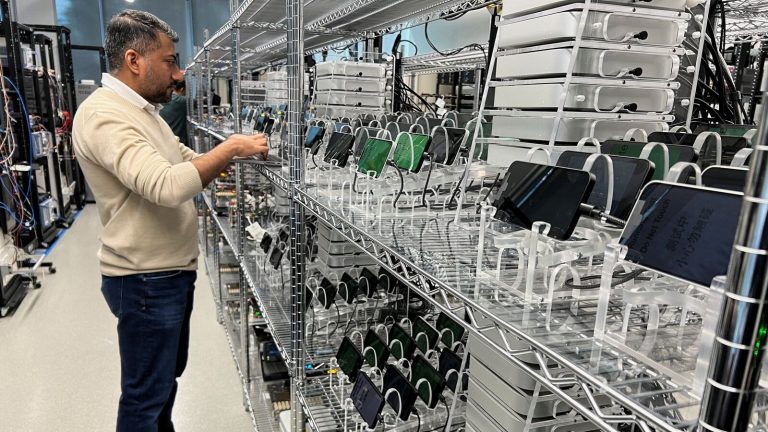Why did Apple suddenly make a modem?
The move is not sudden. Apple’s move to develop a modem has been a long time coming. In 2018, Apple and US chipmaker Qualcomm Inc. played out a long-drawn battle across courts in China, Germany and the US over alleged patent infringements by the iPhone maker. In April 2019, the two companies agreed to an out-of-court settlement—but reports claimed that Apple paid Qualcomm up to $6 billion to settle.
Apple’s settlement was imperative. Qualcomm, at the time, was making its first generation 5G modems for upcoming smartphones—which were slated to launch across global markets from 2019 onward.
Also read | How the iPhone 16e might help Apple log record sales this year
Apple, historically, had always licensed its smartphone connectivity modems from Qualcomm. But the lawsuit at the time raised a conflict in accessing 5G on the company’s cutting-edge smartphones.
This setback eventually, after nearly seven years since the lawsuit with Qualcomm began, led to Apple finally showcasing its own modem design to the world.
Couldn’t Apple have simply selected an alternative modem?
Apple tried. During its lawsuit with Qualcomm, Apple selected Intel Corp. to make custom modems for it with 5G connectivity. However, Intel kept assigning and missing multiple deadlines, which eventually led to Apple’s iPhone 11 in 2019 launching without 5G connectivity.
In July of that year, Apple bought Intel’s modem engineering division for $1 billion. Industry experts and analysts at the time said that the acquisition was targeted at the Cupertino firm building its own connectivity chips. Five and a half years later, the Apple C1 was launched on 19 February.
Also read | Mint Explainer: What will happen if the US restricts chip supply to India?
Why did it take Apple so long to make its modem chip?
Making a modem chip is notoriously difficult because the connectivity standards have to support all global telecommunication networks. To do this, modem makers have to ground-test their chips in each country and each telecom firm around the world to ensure maximum hardware-software compatibility.
Apple in a statement said it tested the C1 chip across 180 network operators in 55 nations to ensure global connectivity. This requires both time and investment in significant financial resources, which is why there are only a select few companies that make cellular and wireless connectivity chips.
Korea’s Samsung Semiconductor, Taiwan’s MediaTek, and the US’s Broadcom and Qualcomm are among the top companies providing connectivity chips for the global smartphone industry. For Apple, Broadcom is the current supplier of wireless or Wi-Fi chips.
Also read | Budget smartphones sell like hot cakes in tepid market
But what does Apple stand to gain?
For Apple, the big win is the control it gains over its ecosystem. Apple has always thrived upon being a very closely knit ecosystem. Designing its own chips and processors means that Apple does not have to force-fit the conditions of third-party chipmakers into its software.
The result of this is faster performance and connectivity. “It also showcases near-complete component autonomy for Apple, now that it also makes its own laptop chips,” said Navkendar Singh, associate vice president at market research firm IDC India. “In the next five years, Apple could likely become independent of almost all technology vendors, which is a hugely positive move for the company.”
As for Qualcomm, reports suggest that its modem sales could drastically drop to one-fifth of current levels.
Why can’t other companies do this?
Samsung Electronics, Apple’s closest competitor in the smartphone business, announced annual revenue of $206.7 billion at the end of last year. This, however, includes all of Samsung’s businesses—whereas Apple’s iPhone business itself is nearly worth 90% of Samsung Electronics’ annual global revenue.
This sheer difference in scale shows why Apple has the headroom to make such investments. While Samsung owns and operates its own semiconductor business—making modems, and memory and processor chips—and even sells them commercially to other companies, its cumulative revenue is still smaller than Apple’s.
For other smartphone makers such as China’s BBK Electronics brands (Vivo, Oppo, Realme, etc.) and Xiaomi, their annual revenue are too small to justify spending billions to make modems—the benefits are not worth this added investment.
Further, Chinese smartphone companies typically sell smartphones at one-fourth or even one-fifth the price of Apple’s iPhones, opting instead for a business model that leverages slim margins at high volumes in price-sensitive markets. But the slim-margin aspect narrows the scope for these phone brands to build modems.
Does this affect the Indian electronics market?
Not directly, but in the long run, modem chip manufacturing could become a part of India’s semiconductor fabrication unit lines after the latter matures as an industry.
As of now, Apple’s C1 chip features sophisticated production nodes such as a 4nm chip. India, meanwhile, is expected to make its first chip fab operational with a capability of producing 28nm chips at best.
India can also see chip engineers and designers build such solutions for the world in the long run.
Also read | Why India’s first locally made chip will be a big deal
For users, the Apple C1 chip, on paper, promises better management of congested networks since Apple’s modem is specifically tuned to support its own software.
However, it is important to note that the Apple C1 chip is only half-effective—it does not support the high-bandwidth 5G spectrum. This could restrict its operations for now, but analysts have a different take.
“Trialling the C1 with the iPhone 16e is a master stroke since it would let Apple try out the chip in action before it is featured in its big-mover flagships over the coming years. It’s a win-win for Apple,” IDC’s Singh said.
Also read | AI chips: India must get its basics right to meet this great catch-up challenge


